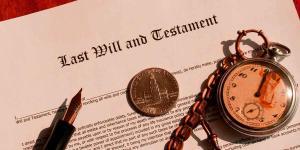The Steps Involved in the Probate Process in New York
Probate is the legal process through which a deceased individual’s estate is settled, and their assets are distributed according to their will or state law. In New York, the probate process can be complex, involving several steps and legal requirements. At Morgan Legal Group in New York City, we specialize in guiding clients through the probate process efficiently and effectively. This guide will explore the steps involved in the probate process in New York, helping you navigate this crucial legal procedure.
Step 1: Filing the Petition
The probate process in New York typically begins with filing a petition in the Surrogate’s Court of the county where the deceased resided at the time of their death. The petition is usually filed by the nominated executor or a person interested in the estate. The key components of this step include:
- Submitting the decedent’s original will (if available) to the court
- Providing notice to all interested parties, including beneficiaries and heirs
- Notifying the court of any challenges to the will’s validity
The court will review the petition and schedule a hearing to address any issues or objections raised during this stage.
Step 2: Appointment of an Executor
Once the court is satisfied with the petition and any necessary hearings, it will appoint an executor or personal representative to manage the estate. If the deceased left a valid will that named an executor, the court will typically honor that choice, provided the nominated individual is qualified to serve. The court will appoint an administrator if there is no will or nominated executor.
The executor’s role includes:
- Gathering and inventorying the deceased’s assets
- Notifying creditors and paying outstanding debts and taxes
- Distributing assets to beneficiaries according to the will (or state law if there’s no will)
Step 3: Asset Valuation and Inventory
One of the essential tasks in the probate process is determining the value of the deceased’s assets. This includes real estate, financial accounts, personal property, and any other assets that need to be distributed. The executor must provide a detailed inventory of these assets to the court and interested parties.
Step 4: Notice to Creditors
The executor must notify known creditors of the deceased’s passing and the probate process. Creditors typically have a limited time frame in which to file claims against the estate. The executor is responsible for reviewing and approving or denying these claims based on their validity.
Step 5: Payment of Debts and Taxes
Before distributing assets to beneficiaries, the executor must settle the decedent’s outstanding debts and taxes. This includes paying off credit card debts, mortgages, medical bills, and any federal or state estate taxes that may apply.
Step 6: Asset Distribution
Once all debts, taxes, and expenses have been addressed, the executor can distribute the remaining assets to the beneficiaries. The distribution should align with the terms of the will or the state’s intestate succession laws if there is no will.
Step 7: Final Accounting and Closing the Estate
The executor must provide a final accounting to the court and interested parties, detailing all financial transactions and asset distributions. Once the court approves the final accounting and is satisfied that all aspects of the estate have been properly managed, it will issue an order to close the estate.
Step 8: Discharge of the Executor
With the court’s approval and the estate officially closed, the executor can request a discharge from their responsibilities. Once discharged, the executor is relieved of their duties, and the probate process concludes.
Conclusion
The probate process in New York involves several intricate steps, from filing the initial petition to closing the estate and distributing assets. Navigating this process can be complex, and following all legal requirements and deadlines is crucial.
If you need guidance or assistance with the probate process in New York City, Morgan Legal Group is here to help. Our experienced estate attorneys can provide the support and expertise needed to ensure a smooth and efficient probate process.
































